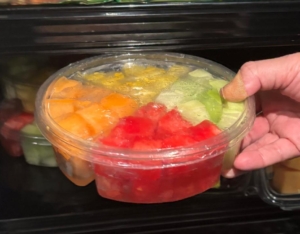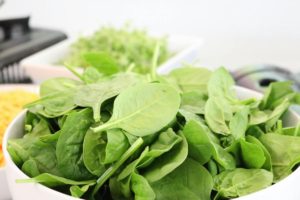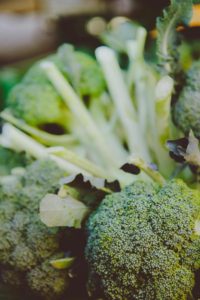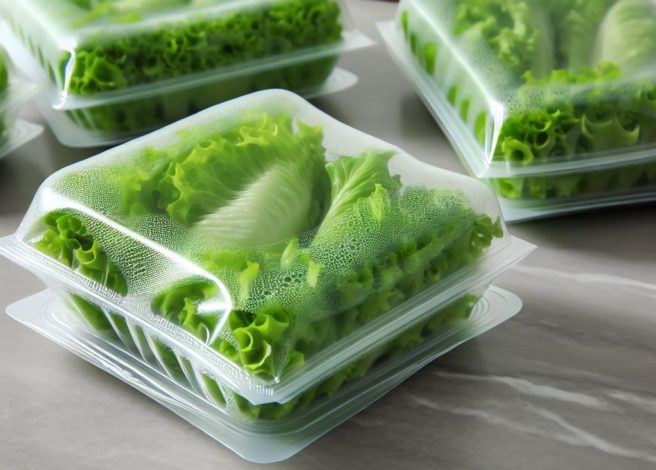When your carefully packaged produce arrives at retail locations showing signs of produce package bulging, you’re facing more than an aesthetic issue. These containers that look ready to burst can compromise product safety and seriously damage your brand’s reputation.
This week, we sat down with Jeff Brandenburg, Founder and President of The Qfresh Lab/JSB Group, LLC. With over 45 years in packaging technology, a background in Chemical and Biomedical Engineering and Food Safety, and experience as both an industry advisor and university lecturer, Brandenburg brings unparalleled expertise to our discussion on innovation in fresh food packaging.
This article will outline what you need to know about the science behind produce package bulging and how to prevent it — because your packages shouldn’t look like balloons at the Macy’s Thanksgiving Day Parade.
The Living Package: Why Produce Breathes
Fresh-cut produce is one of the only foods where we’re actually packaging something that’s alive. This living product constantly consumes oxygen and releases carbon dioxide, just like we do when we breathe. 
But here’s the catch: different produce items breathe differently. These are known as “respiration rates.” For example, spinach and arugula are heavy breathers, while root vegetables breathe more slowly. Some fruits, like apples, add another twist by producing ethylene — a natural ripening gas that can affect nearby produce. When you don’t account for these differences and gases, you’re setting yourself up for a packaging failure.
Why Fresh Produce Packages Bulge: The Anaerobic Danger Zone
Package bulging occurs when produce transitions from aerobic (with oxygen) to anaerobic (without oxygen) respiration. Here’s the process:
- Produce consumes available oxygen in the package.
- When oxygen drops too low, the produce switches to anaerobic respiration.
- This creates excessive CO₂, causing the package to puff up.
- In extreme cases, this can lead to off-flavors, odd textures, food safety concerns, and lids possibly popping off.
- Prolonged anaerobic conditions can also lead to an increased risk of Clostridium Botulinum “Botulism” (Yikes!).
The most alarming example? Some fruits like pineapple can become carbonated in their own juices when CO₂ levels get too high. And we’re not talking about a new fun pineapple soda that you can make from home. This is a clear sign that something has gone very wrong.
Practical Steps to Prevent Package Bulging
Just like you wouldn’t want to do yoga in an airtight room, your leafy greens need their space to breathe. But here’s the trick: not all produce is created equal. Broccoli and onions are like marathon runners. They breathe heavily and need good airflow. Root vegetables? They’re more like couch potatoes (pun intended), requiring less airflow.
 Now, you might be tempted to solve bulging packages by punching big holes in your containers. But that’s like trying to cool your house by removing all the windows — sure, you’ll get airflow, but you’ll also get some unwanted visitors (in this case, leaks). Instead, work with your packaging supplier to find the sweet spot using smaller micro-perforations allowing for the CO2 to escape via a transmission rate. Think of it as giving your produce a perfectly fitted breathing mask rather than leaving the door wide open.
Now, you might be tempted to solve bulging packages by punching big holes in your containers. But that’s like trying to cool your house by removing all the windows — sure, you’ll get airflow, but you’ll also get some unwanted visitors (in this case, leaks). Instead, work with your packaging supplier to find the sweet spot using smaller micro-perforations allowing for the CO2 to escape via a transmission rate. Think of it as giving your produce a perfectly fitted breathing mask rather than leaving the door wide open.
Temperature control is your other best friend. For most produce, keep it cool — below 40°F within four hours of harvesting. This isn’t just a suggestion; it’s like hitting the snooze button on your produce’s metabolism. Install reliable thermometers in your storage areas and check them regularly. Digital data loggers are relatively inexpensive and can track temperature throughout your operation, keeping an electronic eye on things when you can’t be there.
For small processors and retailers, your eyes are your best tools. Make regular package inspections part of your routine, especially in the first few days after packaging. Watch for patterns — if certain products are consistently bulging or leaking, document it. These observations are like clues in a mystery novel, helping you identify and solve problems before they become full-blown produce catastrophes.
Practical Monitoring Approaches
You don’t need a laboratory to implement effective monitoring. Focus on these accessible methods:
- Conduct regular visual inspections of packaged produce, looking for early signs of bulging
- Track and document temperature at key points in your operation using basic digital thermometers
- Take photos of any packaged produce bulging to help identify patterns
- Keep detailed records of when problems occur and under what conditions
- Monitor customer feedback and returns related to package quality
If you consistently experience issues despite these measures, consider partnering with your packaging supplier for more detailed analysis. Many suppliers offer testing services or can recommend affordable solutions for their customers.
Why Gases Matter to Your Bottom Line
 Not managing gas exchange in your produce packaging can hurt your business. Beyond rejected shipments and reduced shelf life, you may face customer complaints, excessive food waste, and potential brand damage. Most concerning are the possible food safety issues that can arise from improper gas management. Many businesses unknowingly lose money. Bad gas management can shorten shelf life and harm product quality. You worked hard enough to get your business off the ground. Don’t let a package of fresh-cut onions that now resembles a blowfish pose a danger to your business.
Not managing gas exchange in your produce packaging can hurt your business. Beyond rejected shipments and reduced shelf life, you may face customer complaints, excessive food waste, and potential brand damage. Most concerning are the possible food safety issues that can arise from improper gas management. Many businesses unknowingly lose money. Bad gas management can shorten shelf life and harm product quality. You worked hard enough to get your business off the ground. Don’t let a package of fresh-cut onions that now resembles a blowfish pose a danger to your business.
Take Action Now
Let’s keep your packaged produce looking its best. Start by partnering with your packaging supplier to ensure you have the right transmission rate for each type of produce — because leafy greens need more breathing room than sturdy root vegetables. Getting the transmission rate right means finding that place between proper airflow and package strength. Keep that cold chain running smoothly (think of it as your produce’s personal comfort zone), and make sure your team knows the ins and outs of proper handling. A quick daily walk-through to check packages for bulging or leaks can help spot trends before they become issues.
Remember: the right packaging and some care today keep your produce fresh and your customers happy tomorrow.
We believe in finding the right fit, not just any fit. Reach out for honest guidance without pressure. Inline Plastics is here to answer your questions.
Interested in learning more about The QFresh Lab /JSB Group, LLC? Visit their website or contact them directly.


